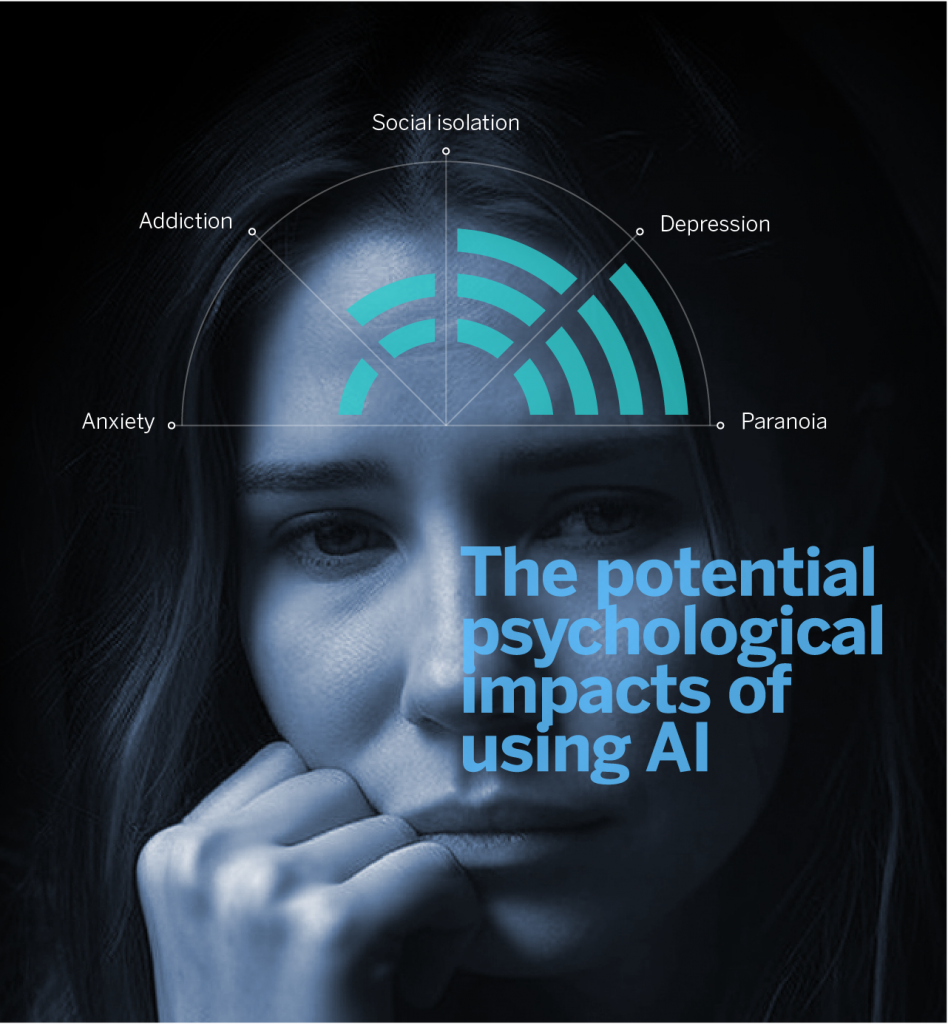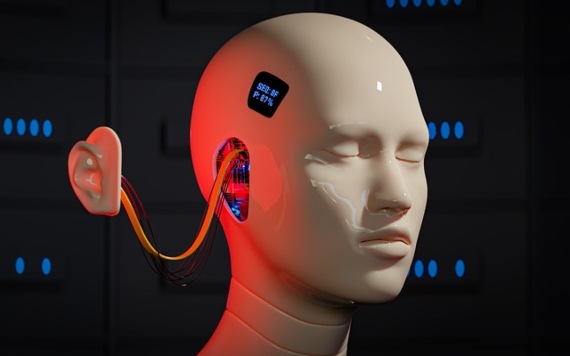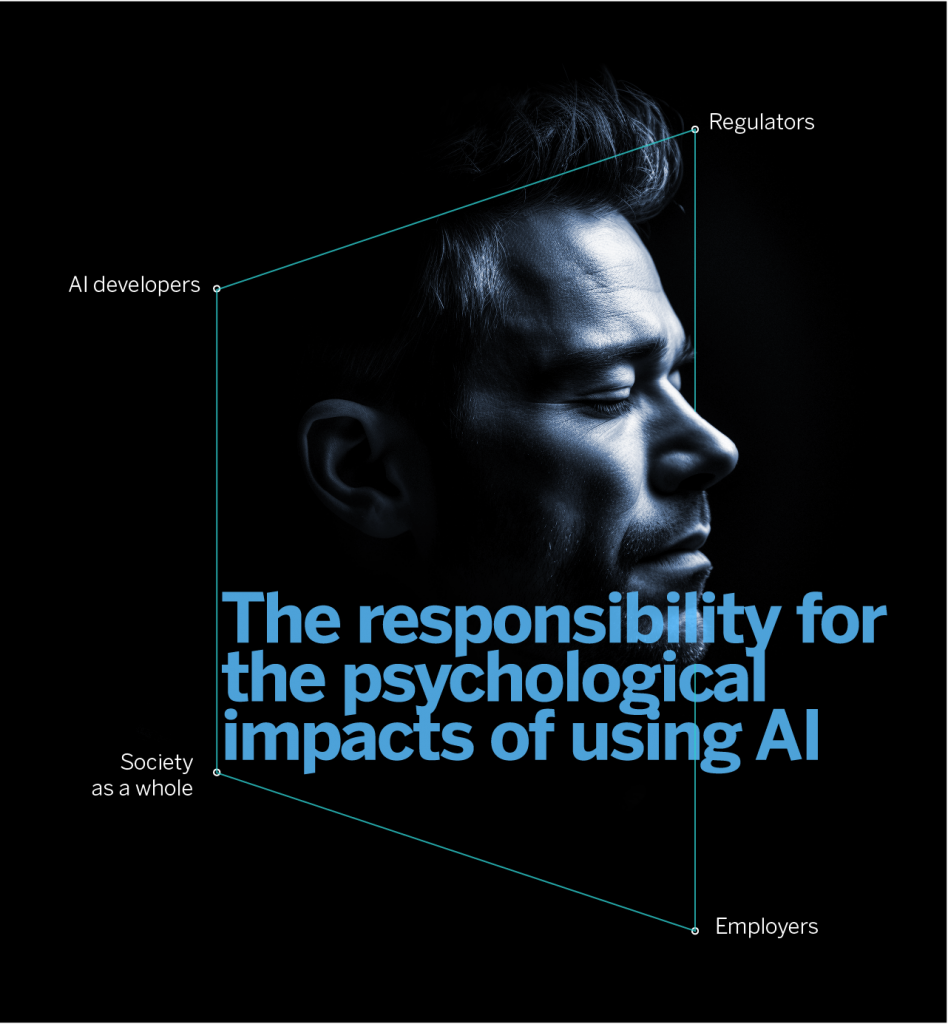Artificial intelligence (AI) has rapidly become integrated into many aspects of our daily lives, from personal assistants on our smartphones to the algorithms that underpin social media feeds. While AI has the potential to revolutionize the way we live and work, it is not without its drawbacks. One area of concern is the potential psychological impacts of using AI systems. As we become increasingly reliant on these technologies, there is growing concern that they may negatively affect our mental health and well-being. In this article, we will explore the potential psychological impacts of using AI systems and discuss strategies for minimizing these risks.
 The potential psychological impacts of using AI:
The potential psychological impacts of using AI:
- Anxiety: Some people may feel anxious when using AI systems because they are not sure how the system works or what outcomes to expect. For example, if someone is using a speech recognition system to transcribe their voice, they may feel anxious if they are unsure if the system is accurately capturing their words.
- Addiction: Overuse of technology, including AI systems, can lead to addictive behaviors. People may feel compelled to constantly check their devices or use AI-powered apps, which can interfere with other aspects of their lives, such as work or social relationships.
- Social isolation: People who spend too much time interacting with AI systems may become socially isolated, as they may spend less time engaging with other people in person. This can lead to a reduced sense of community or connection to others.
- Depression: Some people may experience depression or a sense of helplessness when interacting with AI systems that they perceive as being superior or more capable than they are. For example, if someone is using an AI-powered personal assistant, they may feel inadequate or helpless if the system is better at completing tasks than they are.
- Paranoia: Concerns around the safety and security of AI systems, as well as fears of AI taking over or replacing human decision-making, can lead to paranoid thinking in some individuals. This is particularly true in cases where AI systems are used to control physical systems, such as autonomous vehicles or weapons systems.
It’s important to note that not everyone will experience these negative psychological impacts when using AI systems, and many people find AI to be helpful and beneficial. However, it’s important to be aware of the potential risks associated with technology use and to take steps to mitigate these risks when possible.

There are several steps you can take to minimize the potential negative psychological impacts of using AI systems:
- Set boundaries: Establish clear boundaries for your use of AI systems, and try to limit your exposure to them. This can help prevent addiction and reduce feelings of anxiety or depression.
- Stay informed: Keep up-to-date with the latest developments in AI technology and try to understand how AI systems work. This can help reduce feelings of helplessness or paranoia and increase your confidence in using these systems.
- Seek support: If you are feeling anxious or stressed when using AI systems, talk to a trusted friend, family member, or mental health professional. They can provide support and help you work through your feelings.
- Use AI systems responsibly: When using AI systems, be mindful of their limitations and potential biases. Avoid relying solely on AI-generated information and always seek out multiple sources when making important decisions.
- Take breaks: Make sure to take regular breaks from using AI systems and spend time engaging in activities that promote relaxation and social connection. This can help reduce feelings of isolation and prevent addiction.
- Advocate for ethical use of AI: Support efforts to ensure that AI systems are developed and deployed in an ethical manner, with appropriate safeguards in place to protect privacy, autonomy, and other important values.
By following these steps, you can help ensure that your use of AI systems is positive and does not have negative psychological impacts.

Examples of incidents of psychological impacts of using AI:
- AI-generated deepfake videos: Deepfakes are videos that use AI to manipulate or replace an individual’s image or voice in a video or audio recording. These videos can be used to spread false information or malicious content, which can have a severe psychological impact on the person depicted in the video.
- Social media algorithms: Social media platforms use AI algorithms to personalize the user experience by showing users content they are likely to engage with. However, this can create echo chambers where users only see content that aligns with their views, leading to confirmation bias and potentially increasing political polarization.
- Job automation: AI-powered automation can lead to job loss or significant changes in job roles and responsibilities. This can create anxiety and stress for employees who fear losing their jobs or having to learn new skills.
- Bias in AI algorithms: AI algorithms can perpetuate bias and discrimination, particularly in areas like criminal justice or hiring. This can harm marginalized groups and lead to feelings of injustice and discrimination.
- Dependence on AI: As people become increasingly reliant on AI-powered tools and devices, they may experience anxiety or stress when they cannot access or use these tools.
- Surveillance and privacy concerns: AI-powered surveillance tools, such as facial recognition technology, can infringe on privacy rights and create a sense of unease or paranoia in individuals who feel like they are being constantly monitored.
- Mental health chatbots: AI-powered chatbots have been developed to provide mental health support and guidance to individuals. While these tools can be helpful for some people, they can also lead to feelings of isolation and disconnection if users feel like they are not receiving personalized or empathetic support.
- Addiction to technology: With the increasing prevalence of AI-powered devices, people may become addicted to technology, leading to symptoms such as anxiety, depression, and sleep disorders.
- Virtual assistants: Virtual assistants, such as Siri or Alexa, can create a sense of dependency and make it harder for individuals to engage in real-life social interactions.
- Gaming and virtual reality: AI-powered gaming and virtual reality experiences can create a sense of immersion and escapism, potentially leading to addiction and detachment from real-life experiences.

The responsibility for the psychological impacts of using AI falls on various individuals and organizations, including:
- AI developers: The developers of AI systems are responsible for ensuring that their systems are designed and programmed in a way that minimizes any negative psychological impacts on users. This includes considering factors such as transparency, privacy, and trustworthiness.
- Employers: Employers who use AI in the workplace have a responsibility to ensure that their employees are not negatively impacted by the use of AI. This includes providing training and support to help employees adjust to working with AI, as well as monitoring for any negative psychological impacts.
- Regulators: Government agencies and other regulatory bodies have a responsibility to ensure that the use of AI does not have negative psychological impacts on individuals. This includes setting standards and regulations for the design, development, and use of AI systems.
- Society as a whole: Finally, society as a whole has a responsibility to consider the psychological impacts of AI and to advocate for the development and use of AI systems that are designed with the well-being of individuals in mind. This includes engaging in public dialogue and debate about the appropriate use of AI, as well as advocating for policies that protect the rights and well-being of individuals impacted by AI.
Overall, the psychological impacts of AI are complex and multifaceted, and more research is needed to fully understand their effects.
Ahmed Banafa, Author the Books:
Secure and Smart Internet of Things (IoT) Using Blockchain and AI
Blockchain Technology and Applications
Comments on this publication